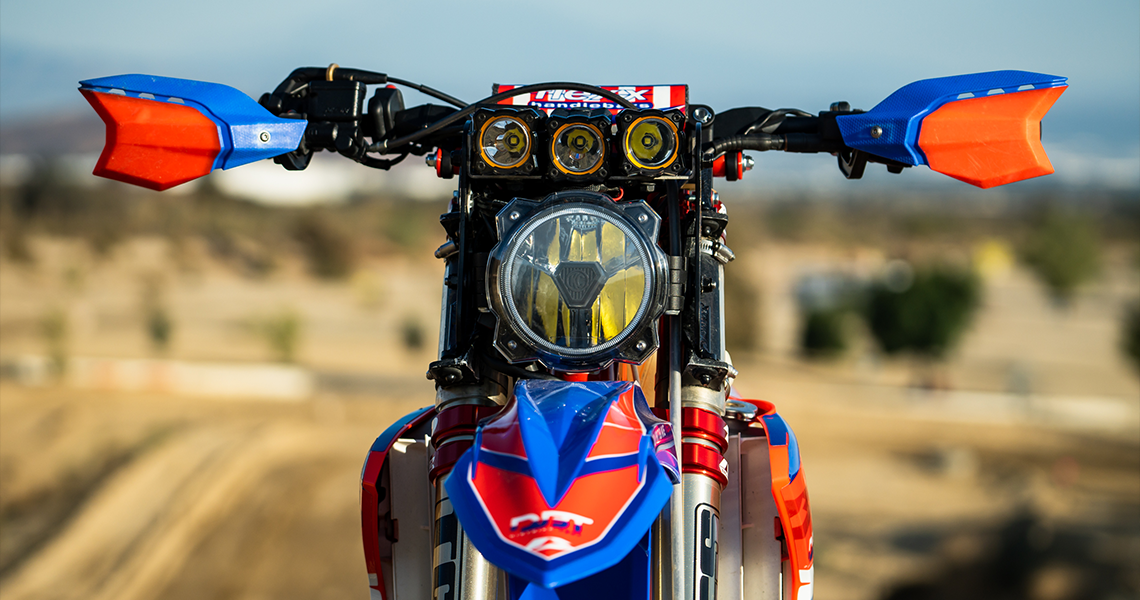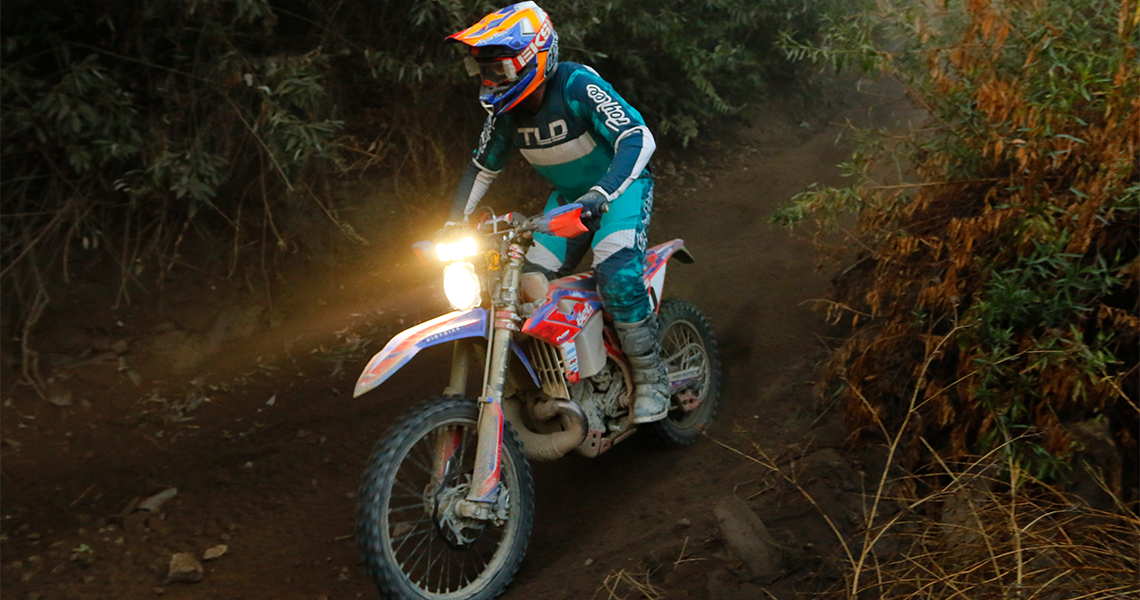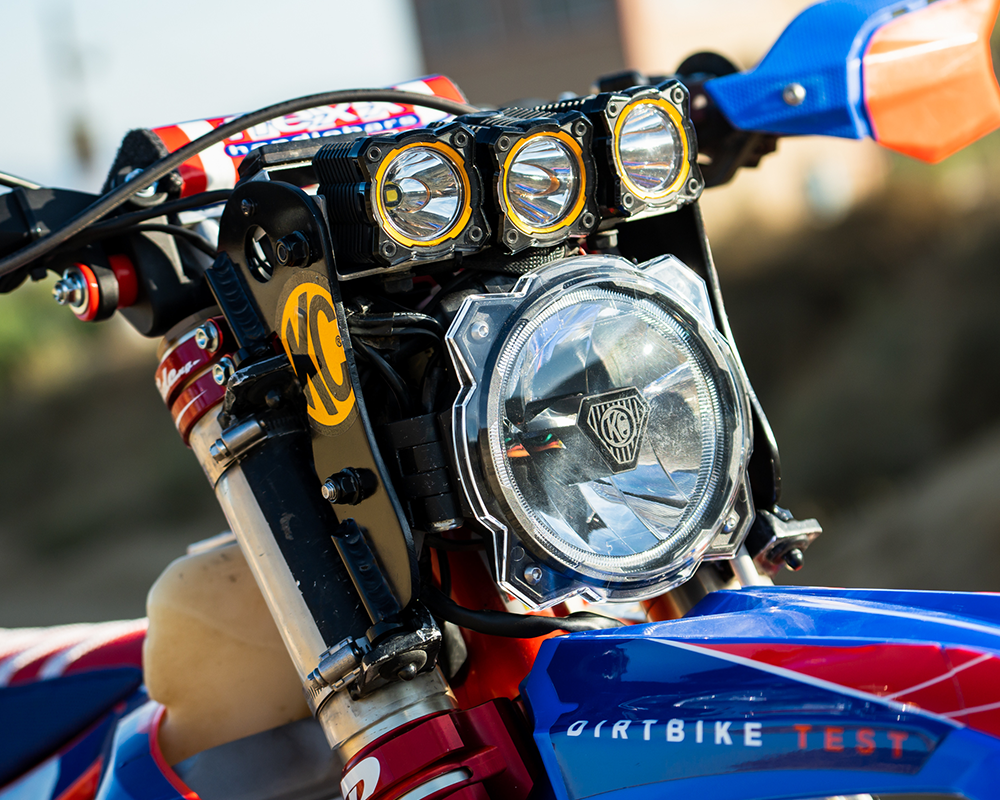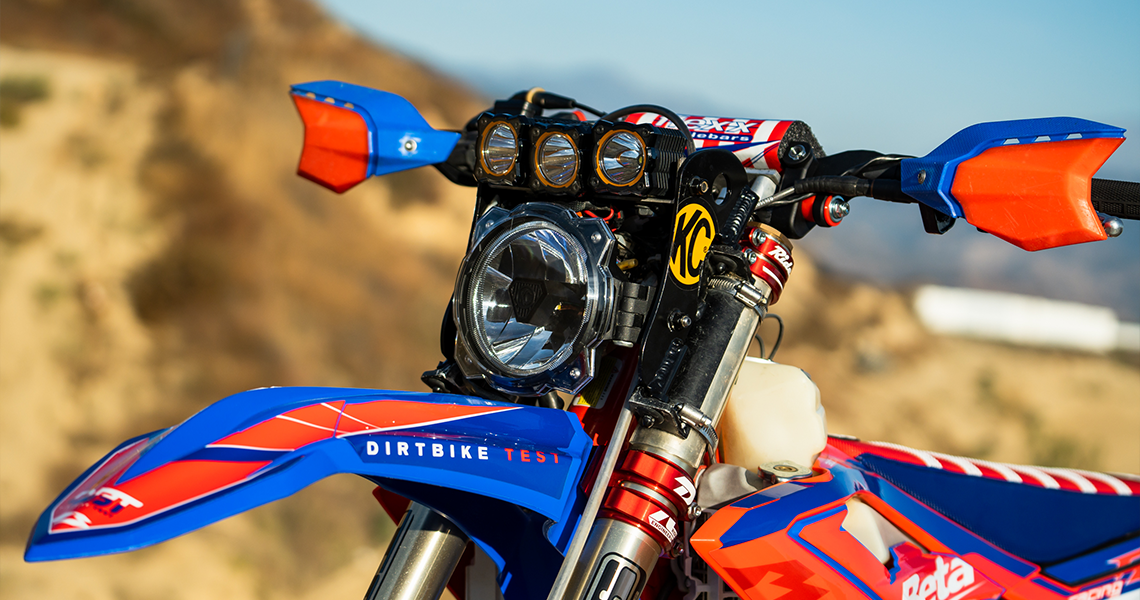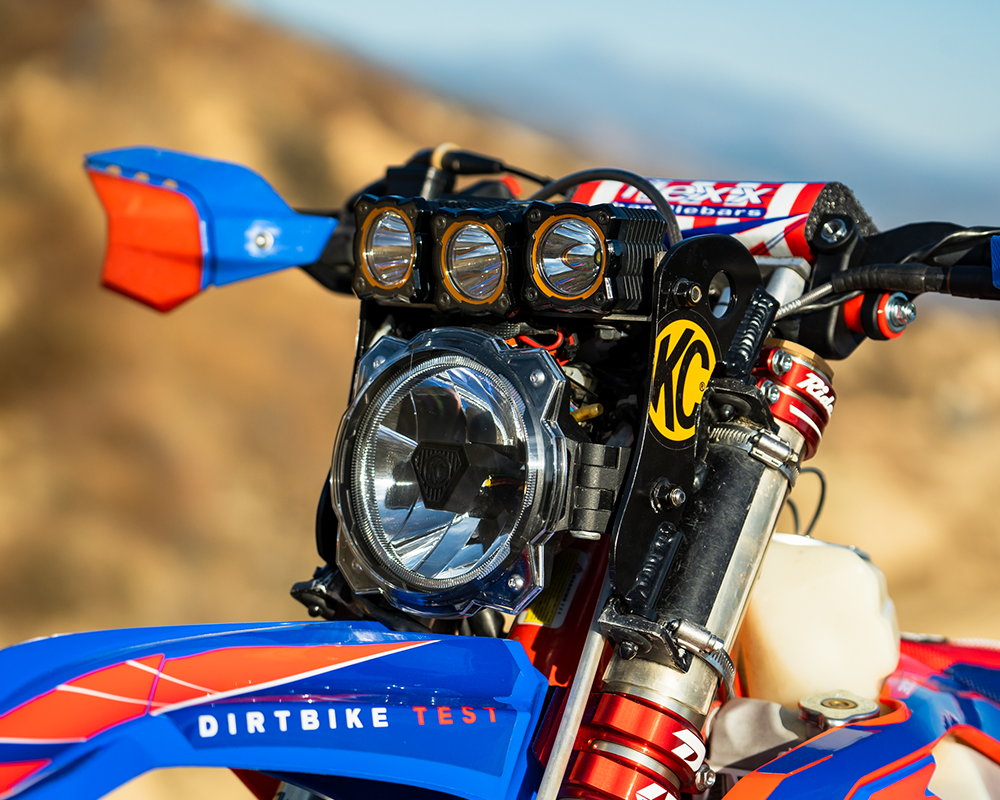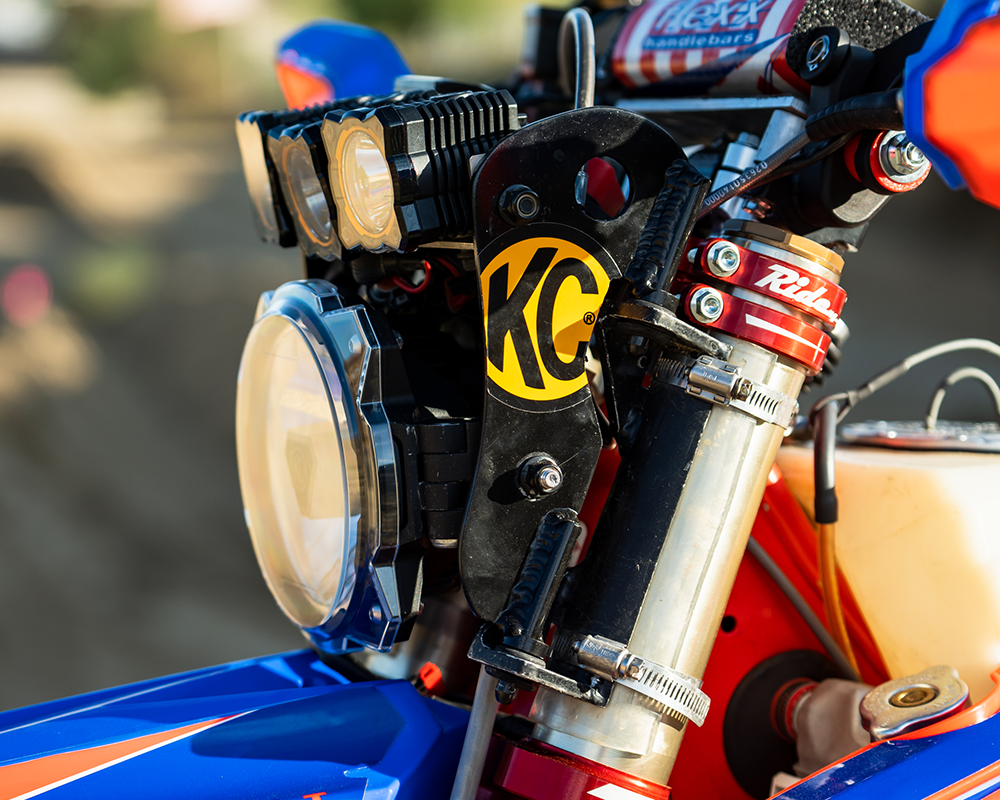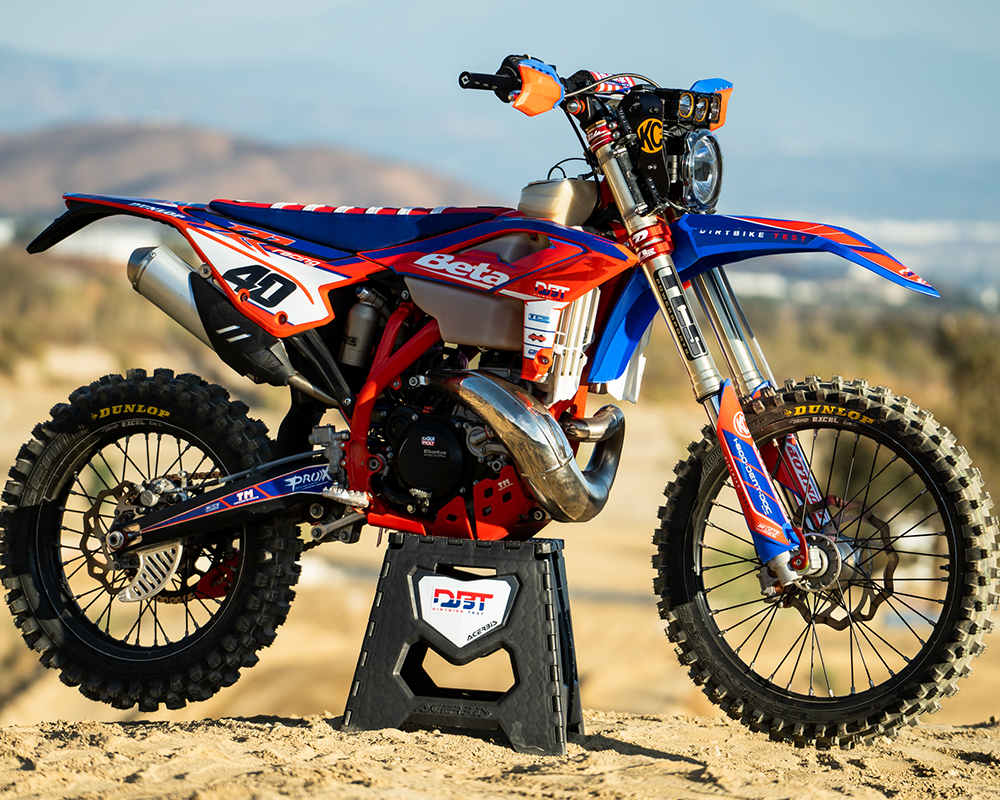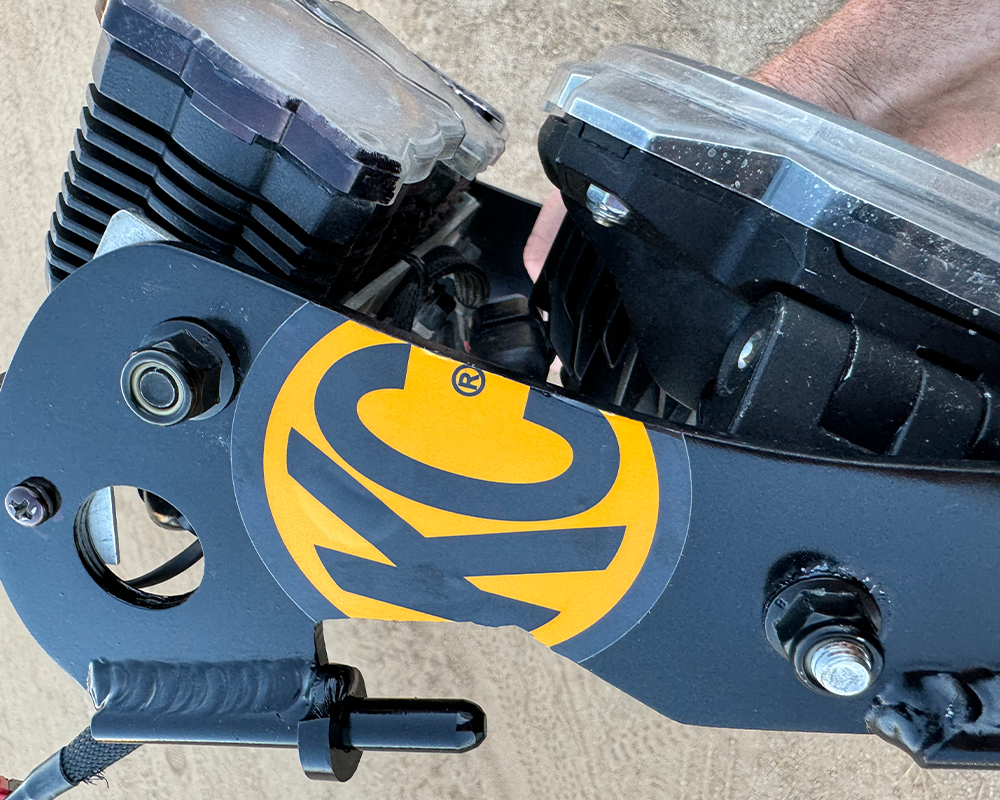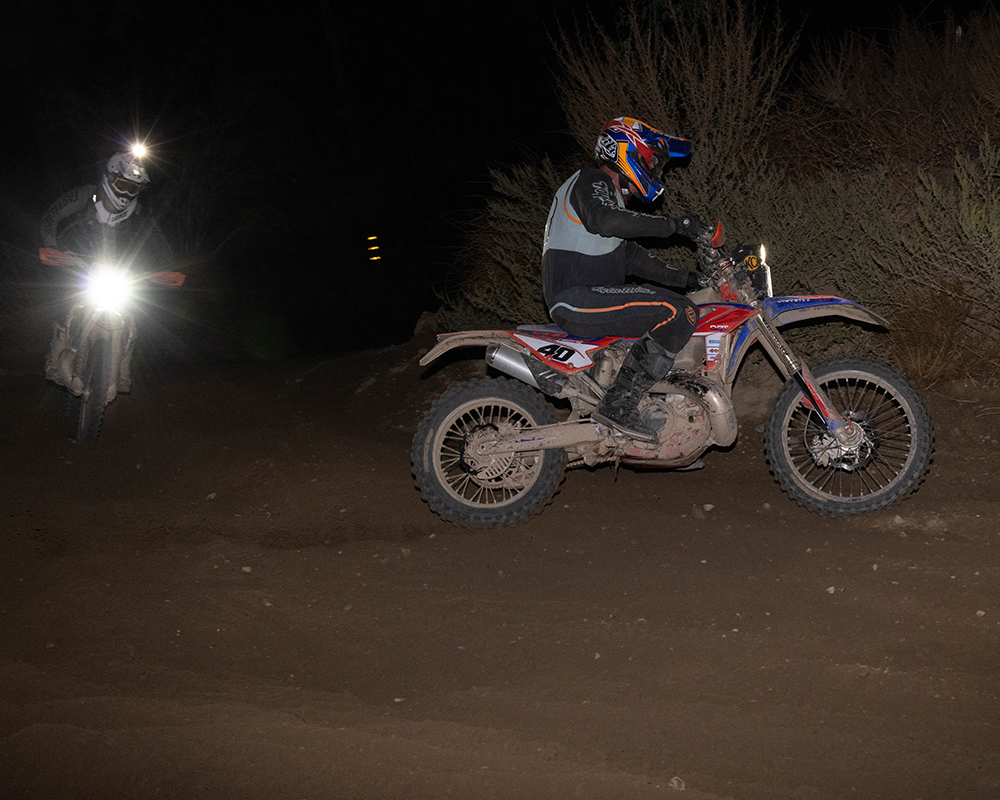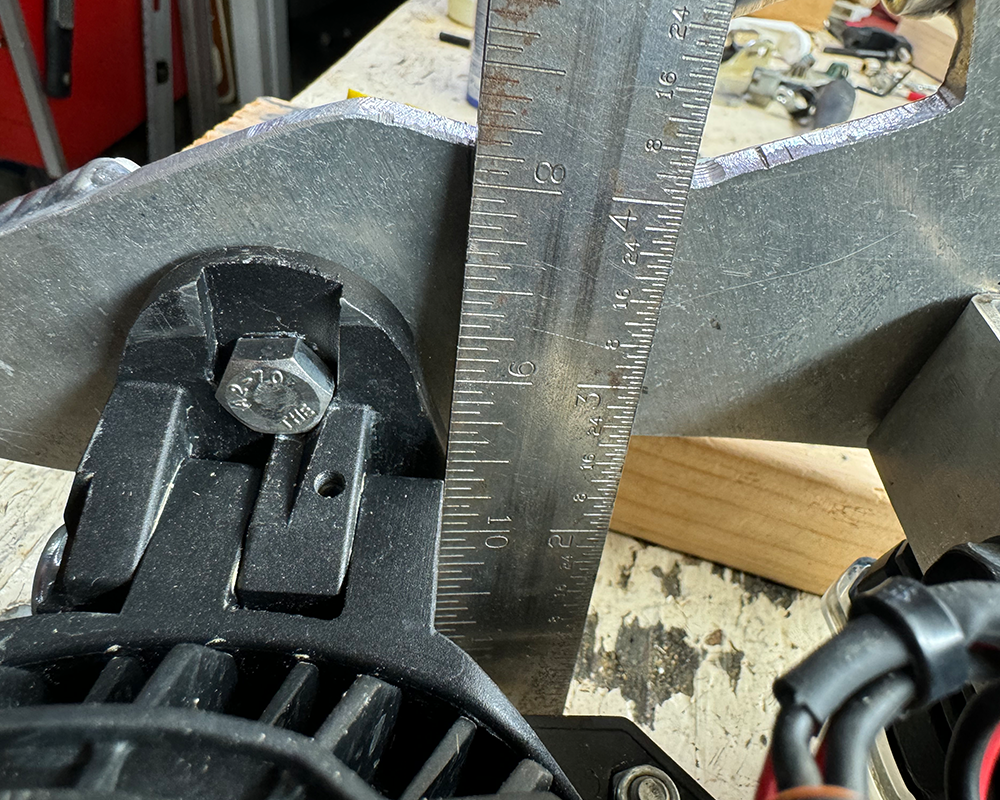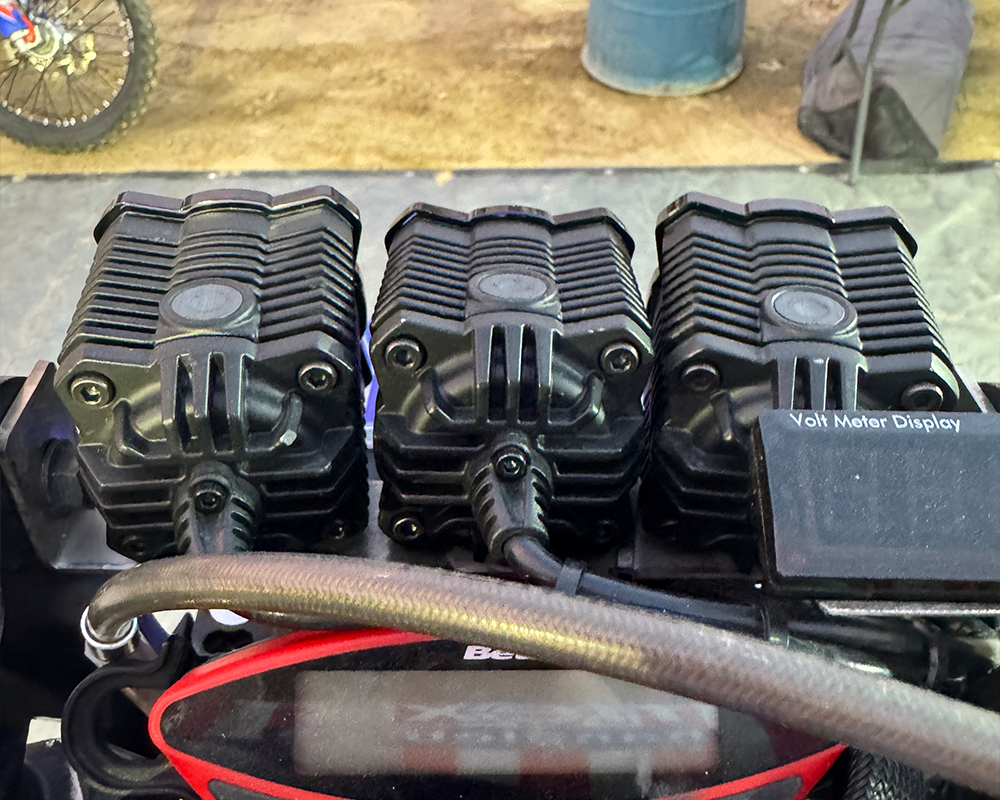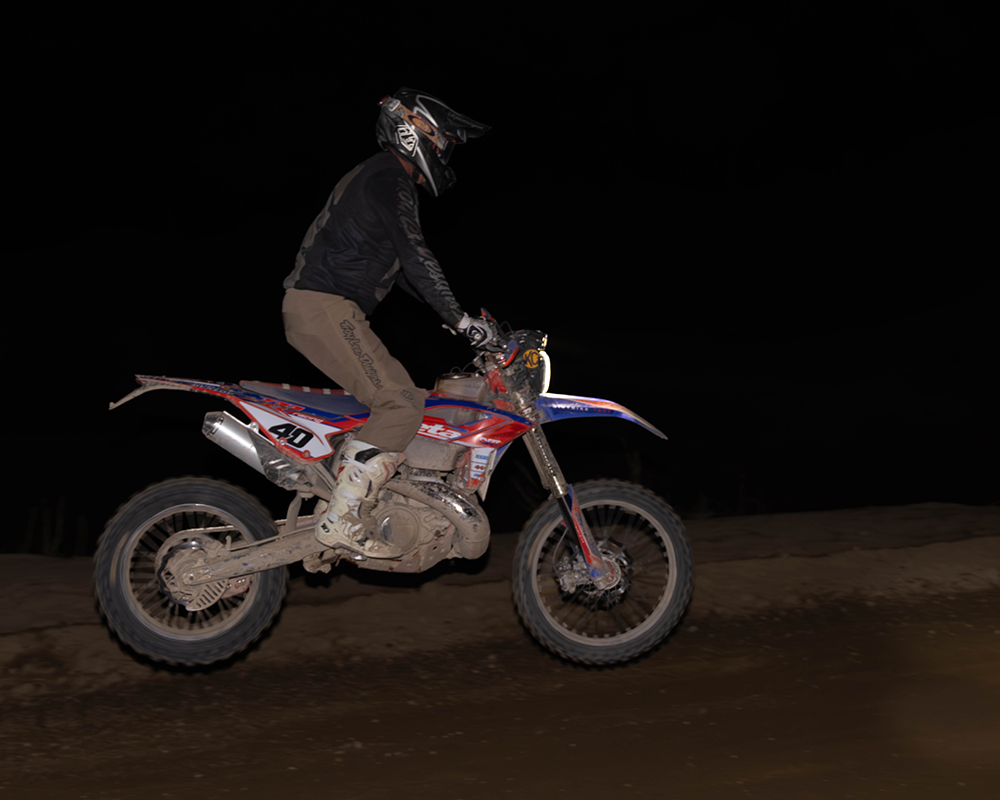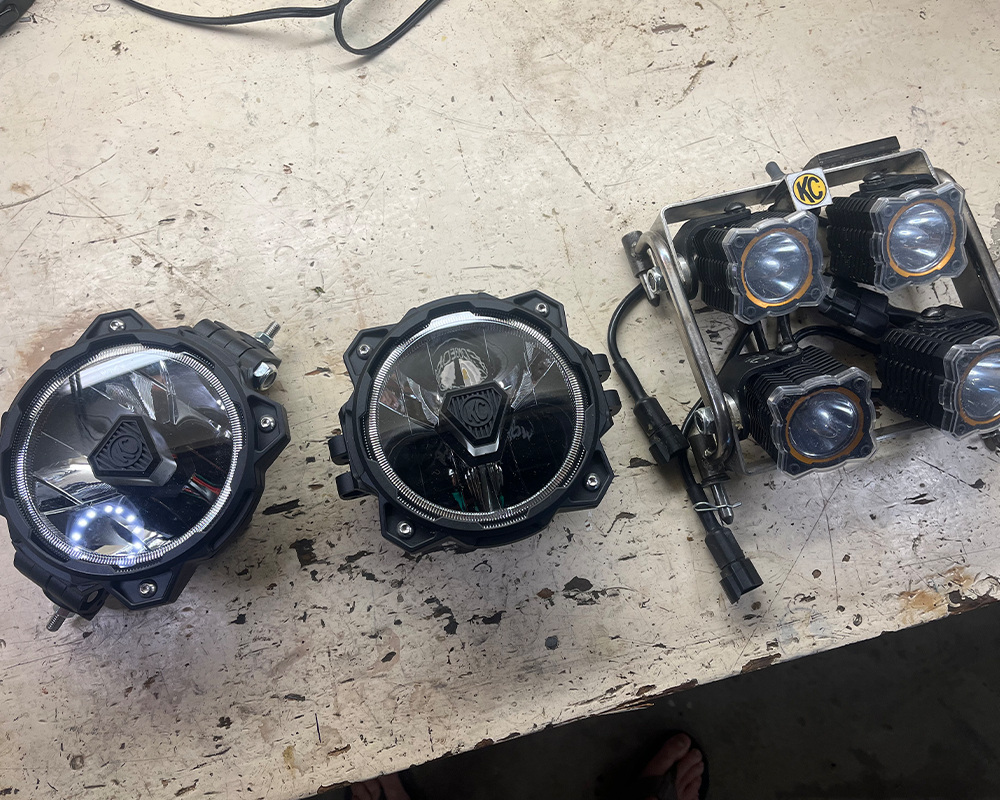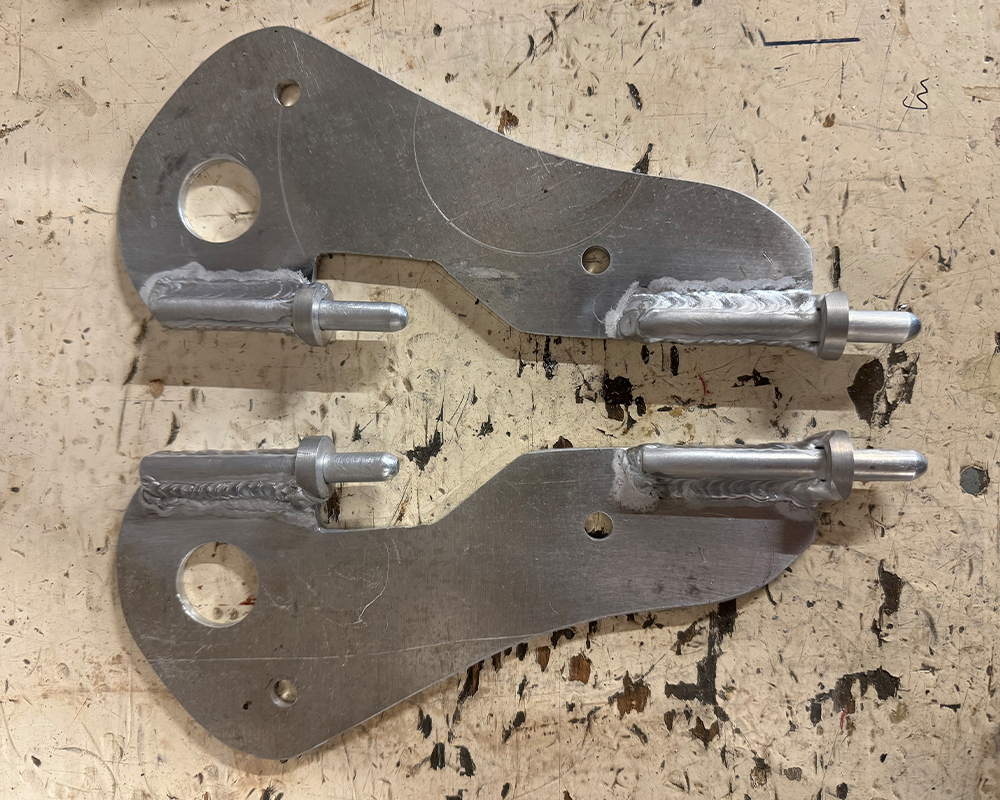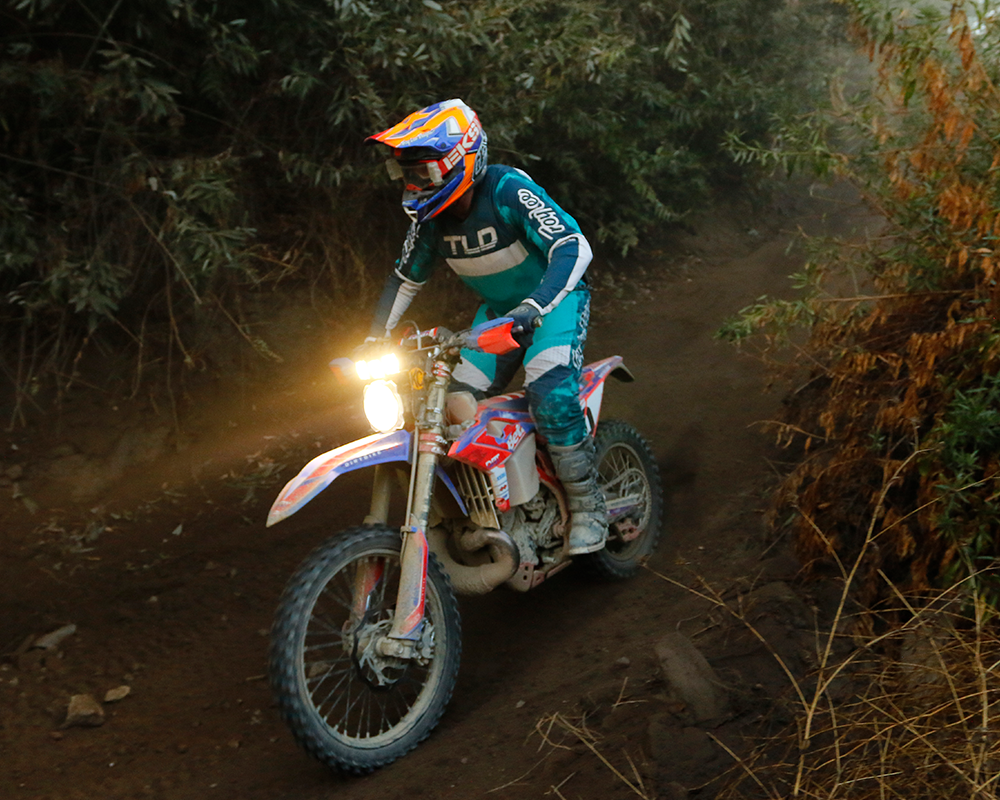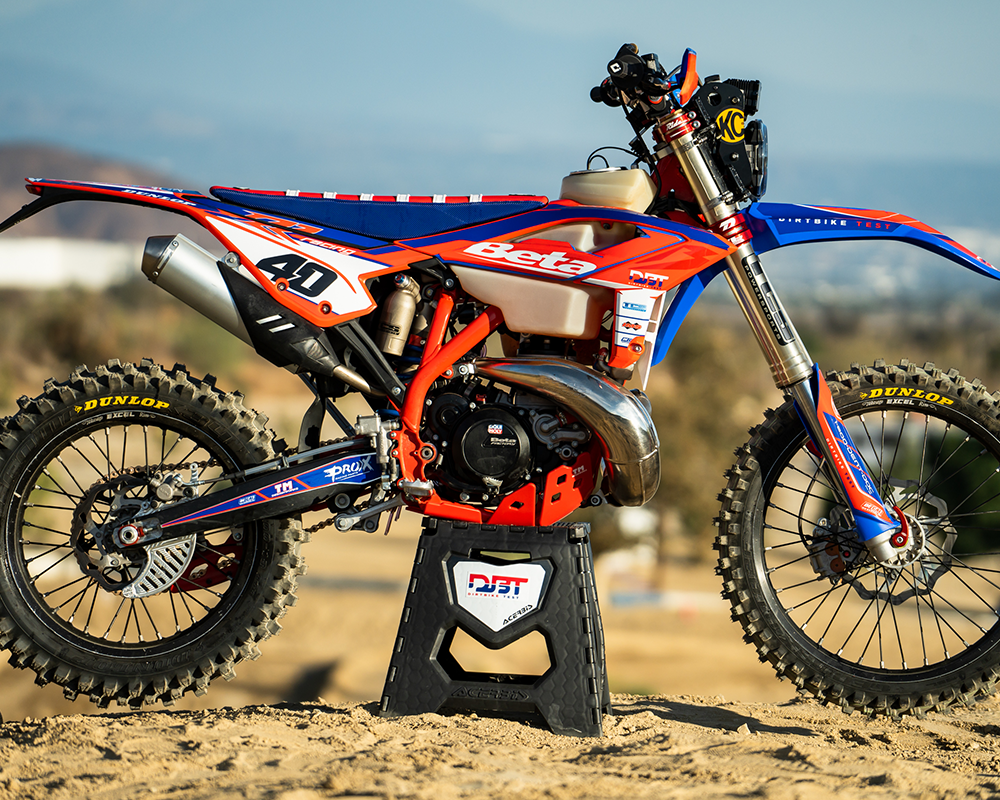KC HiLiTES Gravity Titan LED Light
Company: KC HiLiTES
Price: $399.99
- Compact, lightweight light.
- Even spread of light that covers near and far.
- Simple and versatile mounting.
- Not all bikes can power it without modifications.
What it is
- 6" LED light.
- 39w power draw.
The KC HiLiTES Gravity Titan 6" LED is based off of the Pro6 light but claimed to increase brightness and expand coverage. The base of the light is powered by 3-Source LED optics to cover all distances and features a patented Pass-Through Front Cooling, a cutting-edge design aimed at dissipating heat, ensuring optimal performance and longevity in high-heat, high-demand environments. Additionally, Gravity Reflective Diode Technology is claimed to ensure unmatched beam precision and efficiency, providing brighter and more focused light. The 6 inch LED light takes a 39w draw and weighs ~3.7 lbs. The light is available in Spot, Wide-40, and Driving beam patterns and retails for $399.99. Additional accessories like both amber and clear lenses are available. You can read more about the light itself HERE.
How it works
- Better throw for more distance at higher speeds.
- Relatively light and compact minimizes handling effects.
- Even spread that's easy on the eyes.
- Mounting is versatile.
With the annual 24 Hours of Glen Helen approaching and with more night racing events in Southern CA, our interest in building some new race lights has been at an all time high. We’ve built or bought multiple lights over the years and spent considerable time figuring out how to power them through the use of either the stator output on the bike, separate batteries, or in most instances both. To read about the Beta 300 RR Race Edition we raced at the 24 Hours of Glen Helen using this light, click HERE. For help on powering lights on a dirt bike, read our tech tip article HERE.
The last light we built consisted of four KC HiLiTES Flex ERA 1 LED Pods mounted on an old frame from years ago. Some would argue, but there is value to never throwing away old components as long as you can find them later. The result was very effective; although, the Flex ERA 1 is a close to mid-range light so even with four of them, as speeds went up, it was possible to outrun the light. In addition, I never seem to be able to leave anything alone, even if it’s great so the quest was on to improve the setup.
The team at KC has always been supportive of our efforts so I reached out and was able to discuss what we needed and what options in the KC product line might fit. The four separate Flex ERA 1’s and the ability to adjust each light independently was great, but we needed something to add light 200+ ft out. Luckily they had just launched the new Gravity Titan, a six inch single light that’s available in a driving or spot configuration. We tried both, but the spot gave us the distance we were missing. The Titan is also available as a light bar where as many as 8 or more lights could be linked and mounted together. Not really applicable to a motorcycle application, but the factory mounts for the light bar configuration bolt right up to a single light and provide side mounting, something that makes mounting on a motorcycle much easier.
We mocked up a couple different options and configurations using this combination of lights, but in the end we decided to build the new light around the Titan and used it to provide the spot beam with the three Flex ERA 1’s addressing the close to mid-range light spread. All of which would be mounted between two aluminum plates that would mount to our existing fork brackets. This design was simple enough that we were able to build it with pretty basic tools and some very limited welding. The result was a lot of light in a pretty compact package. Weight mounted in front of the forks on a motorcycle isn’t always ideal, but what really makes it noticeable is when that weight is further away from the centerline of the bike. Because this design is narrow in width and tucked in close to the forks, the added weight is almost unnoticeable. The design keeps it pretty safe as well. During the races where this was used, we did manage to crash a couple times but it was never damaged or even scratched, something we can’t say about other light setups we’ve tried..
To power the light we need more current than most bikes can provide, so we split it between the bike and separate 10K mAh batteries that could easily be swapped out. This lets us avoid aftermarket stators or rewinding of stock components. An additional advantage is by having two independent systems, one pinched wire or blown fuse doesn’t take out 100% of the light. It’s much better to keep going or just get back to the pits with a reduced light than sitting out in the dark waiting for assistance. Also, 100% light failure at high speed is not a fun experience.
The end result was one of the best lights we’ve ever used. The large reflector spot light of the Gravity Titan gave us great long distance coverage and the separate Flex ERA 1 pods allowed us to create a pattern that was perfect for our application. Similar to what we felt on last year’s light solely using the Flex ERA 1 pod’s, the light spread is very smooth and easy on the eyes with no hot spots and the detail we could see in the ground ahead of us is quite impressive. The frame took some time to figure out, but ultimately was simple enough that I was able to build it without access to a machine shop and the cost of the materials was relatively low – any half decent machinist or fabricator could mock up this setup at relatively low cost. We’ve used the light in several events now from night desert races to Glen Helen grand prix’s and it's performed beyond our expectations. It’s so good that maybe I’ll leave it alone and not try and redesign it for next year's events…maybe.
https://youtu.be/dEqM95mBR4Y?si=Ao3i_4kZ2GLevfLG
Leave a Reply
